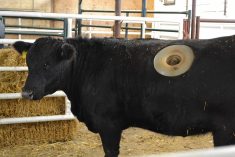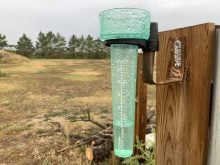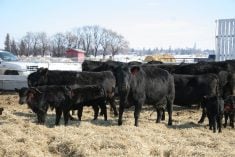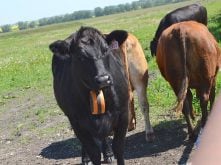Beef producers may need to further reduce their herds and seek government aid for a second year in a row if drought conditions persist, says Alberta Beef Producers.
The organization is already talking to the province about potential assistance, said vice-chair Jason Hale, a cow-calf producer in the Bassano area.
“It’s tough, because we don’t like going to the government,” he said. “We’re a pretty self-sufficient industry, but the cow herd is decreasing in Canada, and most cows in Canada are in Alberta.”
Read Also
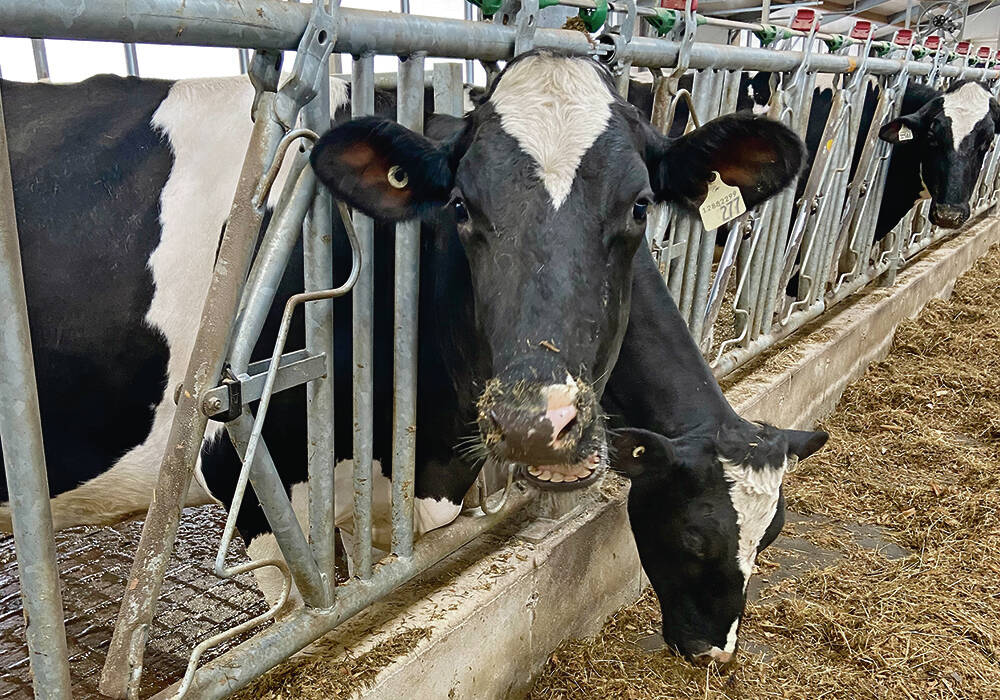
Alberta Milk opens annual hospital fundraiser
Alberta Milk embarks on holiday season campaign to raise money for Alberta Children’s Hospital Foundation
The southeast part of the province is particularly hard hit, said Hale.
“Coming into this year nobody had any extra feed,” he said. “Some producers had to get rid of cows last year because they couldn’t find it or couldn’t afford to pay that high price for the feed.
“Optimistic ranchers and farmers said, ‘It’s going to be better next year. ‘Well, so far, it’s not and we are running out of time to get some grass growth.”
Hale, whose family settled near Bassano in 1910, has never seen, or heard of, conditions like this.
“My uncle said he can never remember it being that dry, and that hot, for that long,” he said. “And that was last summer.”
Hale lives in the Eastern Irrigation District, so he can grow some feed. But it won’t be enough this year, and with the cost of minerals, fertilizer, electricity, and fuel all rising, something has to give.
“We’re going to have to get rid of cows this fall — if we can make it to fall,” he said. “I’m already planning on which cows are going to go and how to move some pastures around. Praying for rain.”
Alberta Beef Producers chair Melanie Wowk culled a third of her herd last year due to feed scarcity. There has been some rain this year on her farm in the Beauvallon area (northeast of Vegreville), so she’s been able to operate without selling more stock.
But some rain in early spring doesn’t necessarily mean a good summer, she said.
And events far from Alberta can also impact producers here, she said.
“The worry that we have is we are getting word that some of the American states that are dry have already received some of their drought payments, and that there is already hay being bought up that hasn’t even been harvested yet in some parts of the province,” said Wowk.
“How much feed will we be able to grow here in Western Canada this year? How much will the Americans be sourcing in our country?”
Wowk said she expects the drought will cause some producers to go out of business and once normal moisture conditions return, that it could take three to five years for the industry to recover.
Under current conditions, many producers will continue to liquidate herds — and going to the government for more money isn’t going to fix the problem.
“If you can’t buy feed, you can’t feed those cows money,” she said. “Right now, we are trying to plan for an extended recovery.
“Let’s look towards the future and our younger generation and our younger producers who hopefully will want back in when conditions improve. And how will we do that? Somehow make it more affordable to buy back in.”
Hale said he is worried about cattle industry viability and how feedlots will source stock.
“They are feeling the pinch too because they have high feed costs — grain and silage,” he said. “How are they going to secure enough feed? We are so closely tied together. As a cow-calf producer we produce the calves they purchase.
“We must come up with something. What that looks like, I don’t know.”
Feedlots are struggling with record-high grain costs but the factors driving prices are likely to persist over the next year, said Brenna Grant, executive director of CanFax.
“We’ve seen really strong demand, but also, we didn’t just have drought here in Canada,” she said. “We have reduced availability globally in terms of access to some grains. With grain tied up in Ukraine — it’s not that the grain doesn’t exist. It can’t get to the global market. Can the rest of the world increase grain production to offset that?”
Profit margins are being squeezed, said Grant, particularly for feedlots, which must adjust the price they receive for fed cattle.
“On the cow-calf side, we’ve got producers who had found feed to get through the winter,” she said. “So right now, all eyes are on the skies in terms of weather and who is going to get rain. And we’ve had patchy rain here this spring in Alberta and Saskatchewan.”
The USDA is projecting reduced beef production for 2023 as many American producers are liquidating their herds due to drought, she said.
“What that means is, as we go forward, consumers are going to continue to face high beef prices in North America,” said Grant, adding retail beef prices have been climbing for two years.
And she said she wonders if there’ll be enough feed to support herds through next winter.
“So it’s one of actually seeing what options there are to sustain the cow herd, but there’s also one of remembering that this happens in a North American picture, where we have feeder cattle moving across the border and the U.S. is also experiencing drought conditions as well,” she said.
Even if there is an increased supply of beef, there’s still strong international demand.
“So, it doesn’t necessarily mean that consumers will experience lower prices if supplies increase because there’s an international consumer who is also really hungry and looking for protein.”




